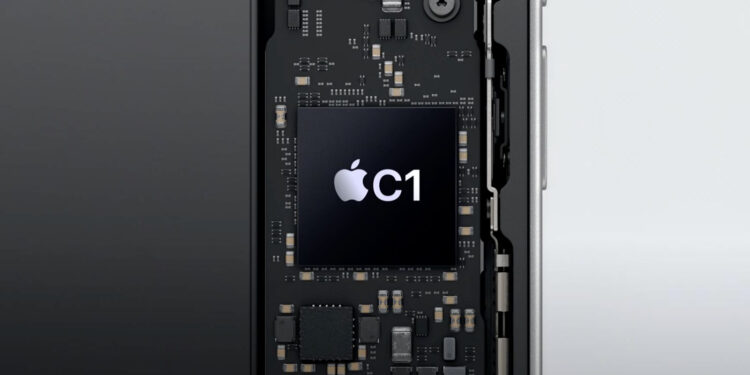Apple is continuing to drive its independence in chip development. With the new C1 modem in the iPhone 16e, the company is using its own mobile communications solution for the first time. According to Johny Srouji, head of Apple's chip division, the C1 modem is just the beginning of a new platform that will be further developed in the coming years. This step has far-reaching consequences. Apple is reducing its dependence on Qualcomm, which has previously supplied the modems for iPhones. At the same time, the question arises as to how the C1 modem compares to the competition and what advantages it offers.
The iPhone 16e brings a major innovation with the C1 modem. Instead of relying on a Qualcomm modem, Apple is integrating its own mobile communications solution for the first time, which is specifically tailored to the iPhone's hardware and software. According to Apple, the focus is not on maximum speed or the best 5G coverage, but on energy efficiency and seamless integration. But what does this mean for users? What technical features does the C1 modem have? And how does this decision affect the entire smartphone industry?
Apple's strategy: Away from Qualcomm, towards independence
Apple has been working for years to become more independent of third-party suppliers. The most important step was the development of its own A chips for iPhones, later followed by the M chips for MacBooks and some iPads. Now Apple is also taking mobile communications technology into its own hands. Until now, Qualcomm supplied the modems for iPhones. But Apple's goal is to develop its own solutions and thus gain more control over its own hardware. According to analyst Ming-Chi Kuo, the iPhone 17 Air will also be equipped with the C1 modem, which shows that Apple is relying on this technology in the long term. Qualcomm itself expects its own share of Apple's modem deliveries to fall to just 20% by 2025. This shows that Apple is further reducing its dependence on external suppliers.
Technical details of the C1 modem
The C1 modem is manufactured using the latest chip technology. Apple uses 4-nanometer manufacturing for the modem itself, while the transceiver (the transmitting and receiving unit) is produced using a 7-nanometer process. Before the C1 modem went into series production, it was tested with 180 network operators in 55 countries. The aim was to ensure that all basic functions such as telephony and mobile data work reliably. Apple describes the C1 modem as the most complex technology the company has ever developed. This shows the effort Apple has put into bringing its own mobile communications solution to market.
Performance: No speed record, but highest efficiency
Apple is pursuing a clear strategy with the C1 modem: not the fastest connection, but the best energy efficiency. Although the modem supports 5G, it does not offer mmWave technology. This means that it does not reach the very highest speeds that Qualcomm modems can deliver in some regions. Apple has optimized the C1 modem so that it is particularly energy-efficient. This decision has a direct impact on battery life. According to Apple, the iPhone 16e will have the longest battery life of all previous 6.1-inch iPhones. This is made possible by the close integration between the modem, the new A18 chip and the iPhone software.
Apple thinks long-term: The C1 modem as the basis for the future
Johny Srouji said in an interview with Reuters explainedthat the C1 modem is just the first step. Apple plans to develop and improve the technology with each new generation. The long-term impact could be enormous. In the future, Apple could use the C modem not only in iPhones but also in iPads, MacBooks or future augmented reality devices. This would further increase the independence from Qualcomm and give Apple an even greater technological advantage.
C1 modem: A decisive step for Apple
With the C1 modem, Apple is taking an important step towards independence. Even if the modem does not boast the highest 5G speeds, it impresses with optimized energy efficiency and close integration into the Apple ecosystem. The big advantage for Apple: more control over its own hardware, less dependence on Qualcomm and better coordination between software and hardware. For you as a user, this means an iPhone with a longer battery life and a reliable cellular connection - even if it is not the fastest 5G modem on the market. The development of this new technology remains exciting, and it is clear that Apple is far from finished here. (Image: Apple)
- Apple presents C1: The first own 5G modem for the iPhone
- iPhone 17: Apple uses its own Wi-Fi chip for all models
- iPhone 17 Air: New rumors about display size & design





